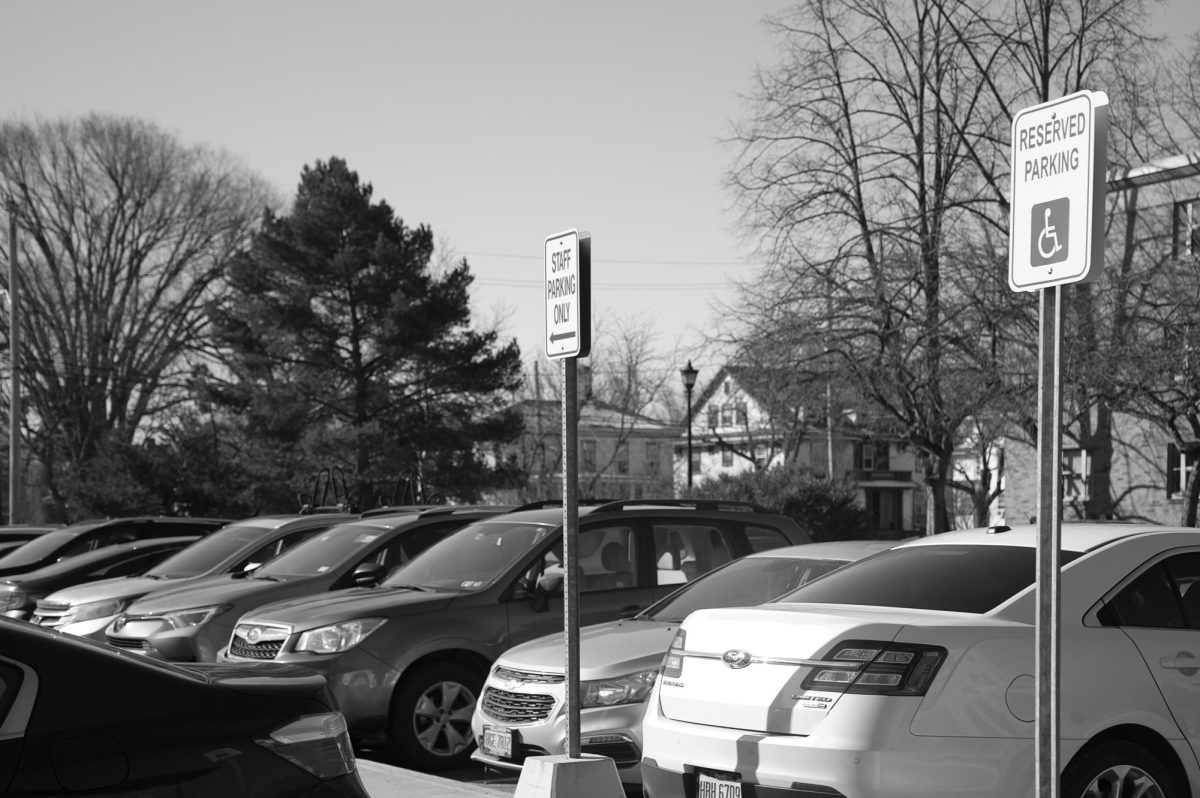One of the most important things about Oberlin is how environmentally conscious it is, as demonstrated by its goal of carbon neutrality by 2025 and the walkable campus. These two aspects reflect the College’s awareness of sustainability and their commitment to it. However, students have cars, and those cars need space. So, how does Oberlin support students who need their cars on campus?
The construction of the new mega dorm on Woodland Street, as well as other projects on campus, are absorbing any space that there was for student parking. College second-year Brea Lawton, who needs a car for her two jobs and to go home, finds the lack of space for student parking to be “not easy” because of her need for a car.
“[Because of the new construction,] there are very limited spaces to park in, and the College hasn’t adapted for this at all,” Lawton said.
Moreover, the new construction is making parking unclear for students since Campus Safety is not being forthright about new parking information, even though students have the right to know because of Oberlin College’s Student Parking Policy. A gap of information resulted in Lawton being given three tickets because of misinformation about parking.
“In the beginning of the year, Campus Safety hands you a map that has all of the locations of the campus and where you can or can’t park, [although] there are parking spaces that are not labeled on that map where students can park,” Lawton said. “So the information that they gave us is not correct. Also, they haven’t adapted signs based on construction, so there are still some signs up that are incorrect. So it is really difficult to park in the right space because it almost feels like they’re lying to us.”
For students living in North Campus, the nearest parking options used to be to the left of Philips gym or alongside the road. Then construction started, and Lawton got her first ticket parking there overnight. Lawton, after getting the ticket, “understood the mistake” she made, since construction was just starting and information was unclear.
However, nothing has changed about the parking information available since then.
She then asked Campus Safety where she could park instead, and they responded with an unspecified area “over by Union Street,” which cannot be found on the map since none of the named lots on Oberlin’s student Parking Policy is on.
This makes things significantly more confusing. Not knowing the specific location of the “Union lot,” she parked in front of the Knowlton Athletics Complex and Williams Field House believing it was the right one.
Student parking comprises two separate sections: temporary parking and overnight parking. With signage that says this large lot provides parking, Lawton found that only two rows of this big lot are meant for students — the rows are then divided into one for temporary and the other for overnight parking.
One night, Lawton came back to campus on a late shift at work to find that there were no more spots for overnight parking. So, instead, she parked nearest to the student parking area for the night.
“I went in the next morning, and I had two tickets: one for parking in an unauthorized lot, and one for overnight parking,” Lawton said. “So I had to pay $40 for that.”
Deciding that it was unfair, Lawton appealed “because the signage was really confusing.”
When looking at the map that Oberlin provides for student car owners, it is clear and concise, but with one big issue: there is no mention of allowed student parking by the athletic fields, even though the “signage unclearly told students can park there.” Instead, the section that Lawton was told to park in but got two tickets for is marked with “V: Visitor Permits Only” and “No Student Parking: No Overnight Parking.”
There is also no space blocked out for new construction, and worse, the lot where Lawton was told not to park in and got her first ticket is marked as “Assigned Parking Permits: Second-Year Students.” Where do students park then?
If Campus Safety is telling students one thing but is not providing the right or explicitly clear information, then does Campus Safety have the right to give Lawton a ticket when the lines are so blurry?
I honestly don’t think that is right.
“Sure, they have created more parking areas around campus,” Lawton added, “But those areas are not convenient. They are across the campus…it feels like they are just trying to get money from students, like they don’t really care to make this experience easy for people.”
After trying to appeal her two last parking tickets, Lawton got denied despite detailing her financial situation.
“It was like they were reading off of a script,” Lawton explained.
Lawton also stated that she hasn’t been updated at all by Campus Safety about new parking areas. I even asked her to look over Campus Safety’s website about student parking and map — she immediately noticed a handful of misinformation caused by the construction.
Some inaccuracies that Lawton noticed are about the Woodland Street Lot (where construction is taking place).
Any space to the left of Philips gym is now unauthorized for students, the lots named in the policy are not identified explicitly on the map and the addresses aren’t provided, and the policy that any student who registers a vehicle and accepts “the appropriate permit is deemed to have knowledge of the Oberlin College parking regulation and is responsible for compliance” is not accurate to Lawton’s situation, as she was not notified of the changes in student parking.
This lack of communication about parking is widening the gap between students and Campus Safety.
Parking should have better signage and clear instructions so that Oberlin can better support its students.




